This post may contain affiliate links. Please read my disclosure.
Get ready to cook some amazing Thai dishes with these essential ingredients for Thai cooking. All the basic ingredients you will need to make those super fragrant, spicy, umami packed Thai dishes!
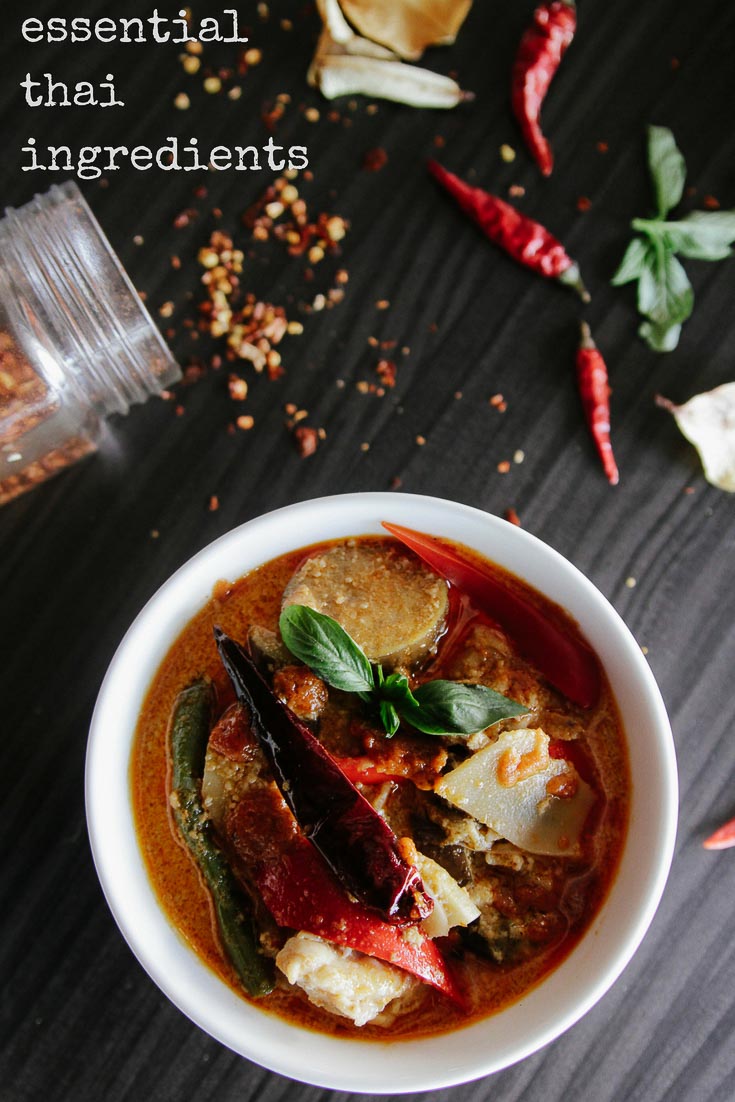
When I used to think of Thai food, I used to think pad Thai. You know, that super Americanized sweet pad Thai.
But Thai food is so much more. Intensely pungent umami flavors with fiery spice and fresh ingredients, I am in love with Thai cuisine.
Jump to:
Regional Cooking
The cooking of Thailand differs slightly by region depending on what's available, climate and influence from it's neighbors.
Northern Thailand: Northern Thailand is like a jungle, and the cooking reflects that in its use of fresh herbs and spices, mushroom and greens. Many of the dishes are influenced by its neighbors Burma and China, with dishes such as khao soi (curry soup with deep fried noodles), all things pork, Thai chili based dips and of course the ubiquitous sticky rice.
Central Thailand: Food in this region tends to be sweeter, with heavy use of palm sugar and coconut milk. There is significant Chinese influence in this region, with lots of stir fries and sauces using bean paste, soy sauce and oyster sauce.
Southern Thailand: As you would likely guess, food in Southern Thailand is heavily seafood based and makes use of spicy chilies, dried fish and fish sauce as well as thick and sweet coconut curries. I am a sucker for food from this region.
Want to Save This Recipe?
Enter your email & I'll send it to your inbox. Plus, get great new recipes from me every week!
By submitting this form, you consent to receive emails from Went Here 8 This.
The Essential Ingredients for Thai Cooking
There is a plethora of ingredients used in authentic Thai cooking. However, the ingredients below are the most commonly used ingredients, and cover much of what I use in my cooking. With grocery stores expanding their international food sections, many of these ingredients can likely be found at your local grocery store. If not Whole Foods is known to carry most of them, and you can certainly find them all at your local Asian market. Or, you can just buy the ingredients online.
All of the below product links are Amazon affiliate links. If you buy through these links, I earn a small commission that helps me pay to keep this site running so I can keep creating super delicious recipes!
Coconut Milk
Coconut milk is an essential ingredient for all Thai curries, as well as soups such as tom kha and khao soi. It offers a delicious creaminess and slightly sweetened flavor. Stock up your pantry with plenty of this stuff. This stuff is a MUST guys. I use Thai Kitchen brand coconut milk and have been happy with the results.
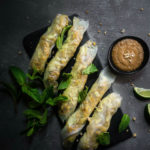
We use coconut milk in these amazing "rustic" Lemongrass Chicken Spring Rolls that's served with an awesome peanut dipping sauce.
Fish Sauce
Truly the backbone of most Southeast Asian cooking, fish sauce is a necessity. You might be wondering if you can use the fish sauce you bought for Vietnamese cooking in Thai cooking. The short answer is yes. While Vietnamese fish sauce has a lighter flavor than Thai fish sauce, it can be used as a substitute (I use Red Boat 40 Vietnamese fish sauce in my Vietnamese cooking). Thai fish sauce tends to be saltier and more pungent, resulting in that super amazing umami flavor we love. I use Squid brand Thai fish sauce when I cook Thai dishes.
Curry Paste
You can go a couple routes here. Curry paste can be found in many grocery stores, or your local Asian market. This is the easy way, and there are definitely some good ones out there. However, if you want GREAT curry, I totally recommend making your own. I know I typically recommend the easiest route, but homemade curry paste is just in a league of its own. If you want to buy it, here are some good ones:
Red Curry Paste: Mae Anong Red Curry Paste
Yellow Curry Paste:Mae Anong Karee Curry Paste
Green Curry Paste:Mae Anong Green Curry Paste
If you want to make it, these recipes from other food bloggers are absolutely amazing:
Red Curry Paste from Kevin is Cooking
Green Curry Paste from Tasting Table
Yellow Curry Paste from Serious Eats
Tamarind
Tamarind has a delicious sweet and sour tang to it that is absolutely addictive. You can buy fresh tamarind pods from the market and make your own paste (pain in the ass, but it can be done), or you can buy the paste. I made it from scratch once, but have decided that buying the tamarind paste is far easier and more convenient.
Shrimp Paste
Made from fermented shrimp, shrimp paste adds an amazing depth of flavor to many Thai dishes, and is also used in making curry paste in some cases. It should be relatively easy to find; I can buy it at my local grocery store.
Thai Chilies
If there's one thing we know about Thai food it's that it can be SPICY! Thai food typically uses bird's eye chilies in it's dishes. If you can't find these in your local store, any small chili will suffice to get that heat. Serrano or fresno chilies work great as a substitute. Dried Thai chilies are often used to make curry pastes.
Check out the best bird's eye chili substitutes
Kaffir Lime
It's the leaves and skin that are typically used from this fruit. Kaffir lime leaves provide great flavor for curries and curry pastes, working as an aromatic. They can be tricky to find sometimes - I order dried leaves from Amazon and they work perfectly!
Galangal
Similar in appearance to ginger, galangal is less spicy and intense than ginger, with a more woody and piney aroma. You can find it at your local Asian market. In a pinch, you can use dried galangal, just be sure to rehydrate it in warm water before use. I always used dried because it's easier to get my hands on (what did we do before Amazon guys??).
Palm Sugar
Palm sugar is a caramelized sugar, similar to brown sugar, that is usually found in cakes and blocks. If you just can't find palm sugar, light brown sugar or coconut sugar can be used as a substitute.
Soy Sauce
Ok, we know what soy sauce is (I hope).
Oyster Sauce
Another umami packed sauce, oyster sauce is typically used in stir fries and adds a slightly sweet quality to dishes. You can buy authentic Thai oyster sauce, but the Chinese style you likely have in your cabinet will work as well. I just use Lee Kum Kee Oyster sauce and have been happy with the results.
Rice Noodles
Used in most stir fried noodles dishes (pad thai, etc.) salads and soups, rice noodles are another staple of Thai cuisine. Rice noodles should be easy to find at your local grocery store.
Glutinous Rice (Sticky Rice)
An absolute must for Thai cooking. Sticky rice is soaked in water overnight and steamed to get that perfect sticky consistency needed to sop up those delicious Thai curries and sauces.
Rice Flour
Rice flour is a very fine flour, often called rice powder, used as a thickening agent in sauces and widely used in Thai desserts. I use rice flour quite often when frying as I love the light batter it provides.
Shallots
Another popular aromatic in Thai cooking, shallots are often used in curries and stir fries. They can be found in your local grocery store.
Thai Basil
Thai basil is different than the sweeter version we are used to seeing in the store. Thai basil has a mild licorice (or anise) flavor and is more pungent than regular basil. While I recommend the fresh version, you can buy it dried as well.
Cilantro
It's the cilantro stems that are used most often in making curries. Cilantro is widely available in most grocery stores.
Lemongrass
Lemongrass is used in many Thai stir fries, sauces, and curries. You can buy fresh lemongrass at most grocery stores, however, I typically buy lemongrass paste. I haven't noticed a significant difference between the fresh and the paste, so I use the paste for convenience.
Utensils Used in Thai Cooking
There's a few things you may want to have when you start cooking Thai food.
Mortar and Pestle
If you're planning on making fresh curries, this is totally necessary. I recommend a large granite mortar and pestle like this one that I use:
Wok
While a wok is not mandatory, it makes stir frying a breeze. Woks typically hold heat better and make it easier to get that quick and hot stir fry. Plus, once well seasoned, they are totally nonstick which is awesome. However, if you're working with an electric stove, a wok may not be the way to go. I use this wok from Craft Wok and am absolutely in love with it:
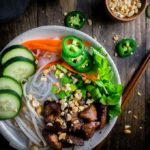
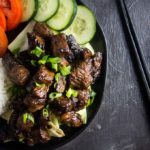
We use a wok to make awesome dishes like these Vietnamese Pork Noodle Bowls or Bo Luc Lac (Vietnamese Shaking Beef).
There are some websites out there that say you need a fancy bamboo steamer basket to make sticky rice, but guys, that just isn't so. It can be made in a foil lined steamer, on a splatter guard, or in a mesh colander. I'll bet you have at least one of these things hanging around!
Want to get your pantry stocked for all different kinds of cuisines? Check out these other "must haves" for an array of cuisines:
Essential Vietnamese Pantry Items
The Essentials for Cooking Korean Food
French Pantry Items
Essential Ingredients for Cajun Cooking
Essential Japanese Ingredients






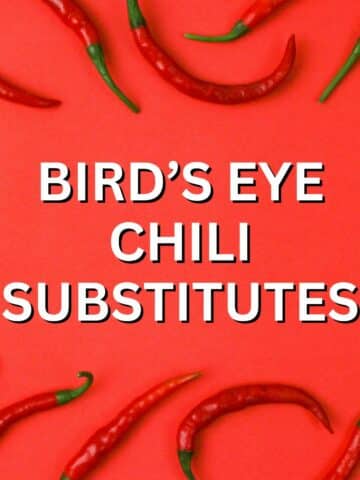
Healthy World Cuisine
So excited to visit Thailand with you. This is one of our favorite cuisines. Have all the required ingredients. Lets get cooking. Take care
Danielle
Let's do it!